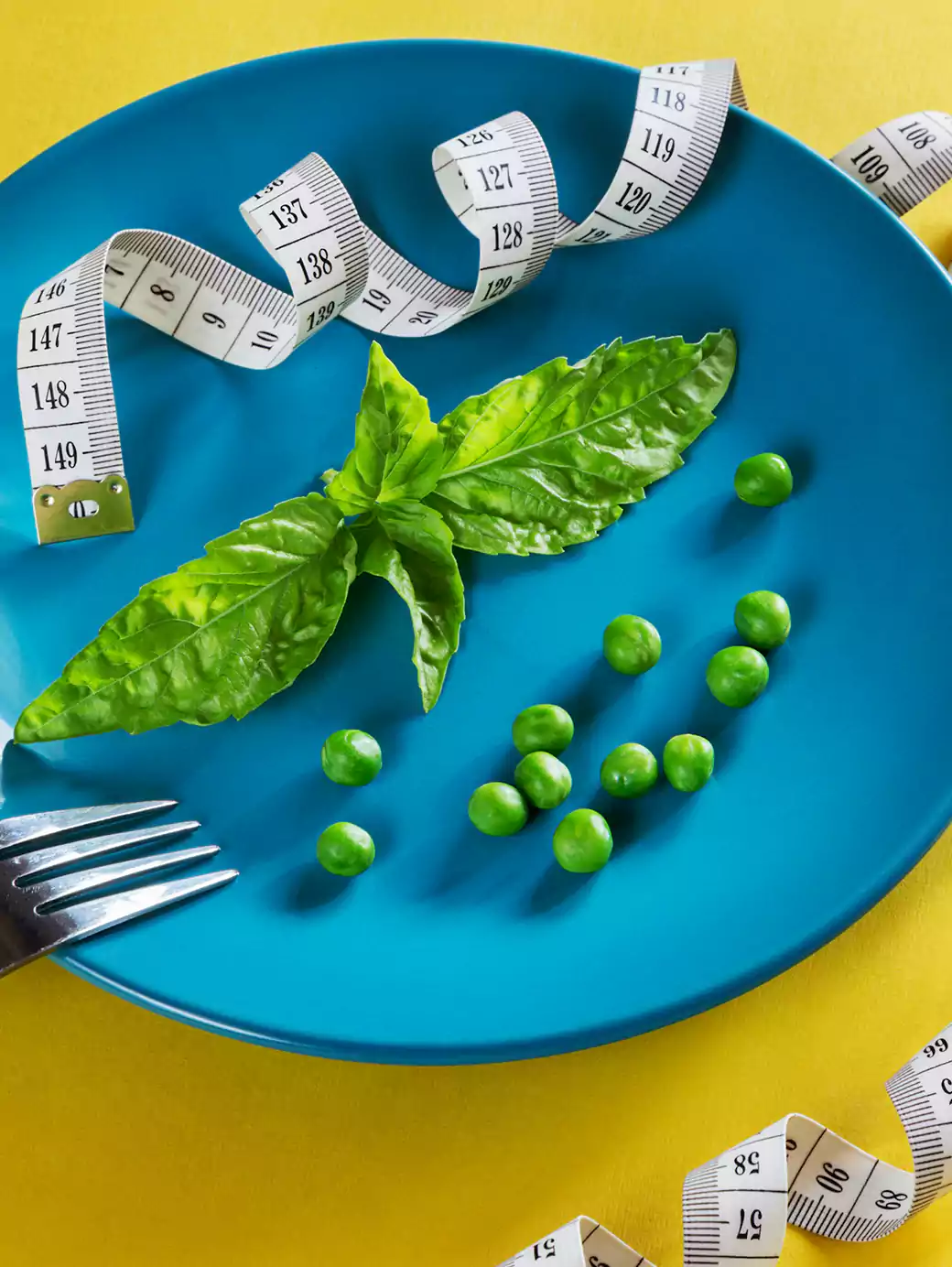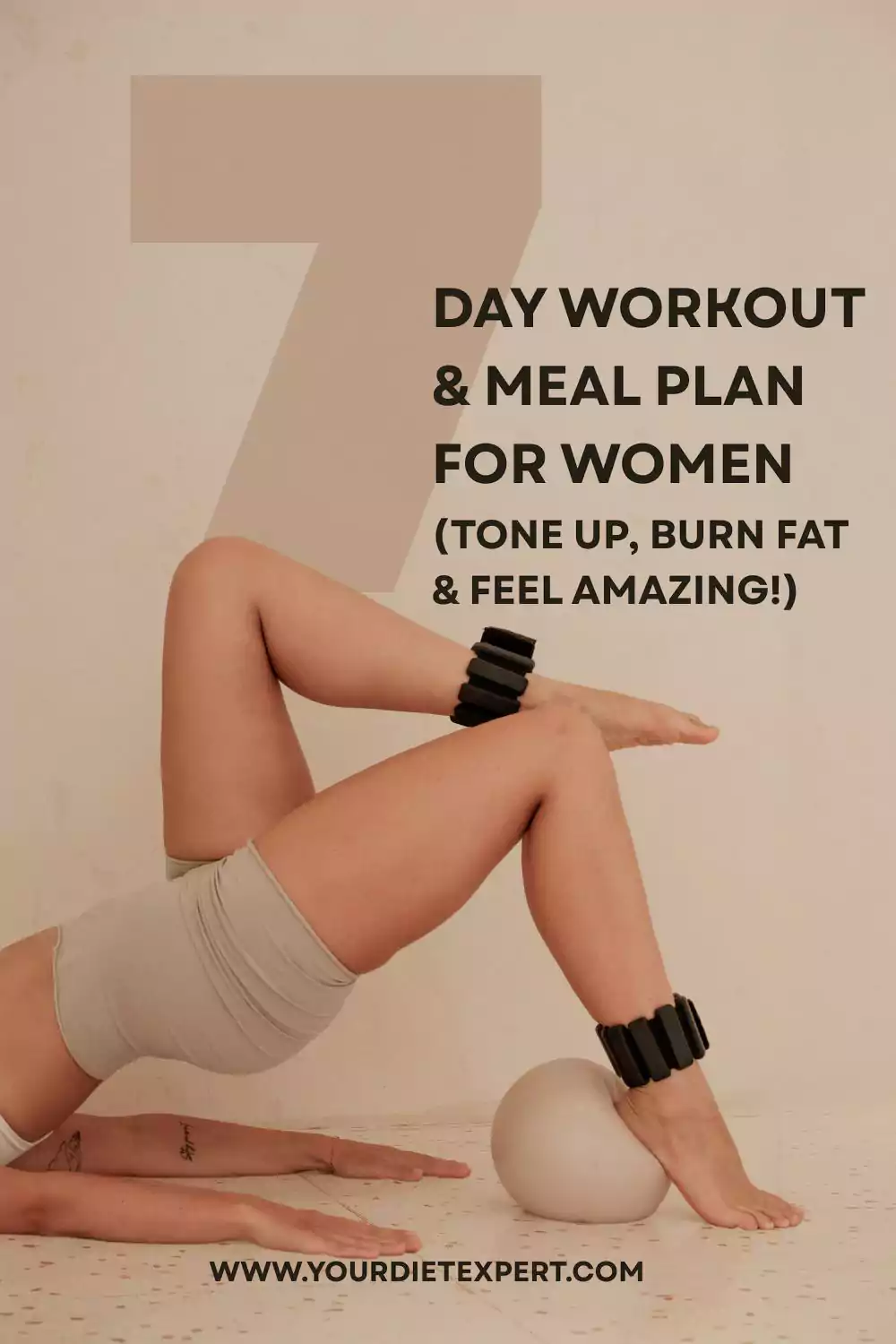Introduction — a plan that fits your life (not the other way around)
If you’re a busy woman trying to get stronger, leaner, and more energized, you’ve probably tried programs that either demand too much time or leave you exhausted and discouraged. This plan was written for you: the woman who wants results without complicated gym equipment, who needs workouts that respect hormones and recovery, and who wants meals that fit real life.
Over seven days you’ll get: short, effective workouts (30–40 minutes), a hormone-friendly meal plan, recovery and mobility work, and practical rules for long-term progress. Every workout includes clear step-by-step cues and beginner → intermediate → advanced options. The nutrition guidance focuses on protein, fiber, and steady carbs to fuel workouts and balance appetite.
This article follows E-E-A-T principles: it combines practical experience-based coaching cues, evidence-based recommendations, and transparent safety notes so you can trust the plan and use it with confidence.
Why a woman-specific 7-day plan matters
Women’s bodies respond differently to training and nutrition because of hormonal fluctuations, reproductive physiology, and lifestyle factors. A program that ignores that is often unsustainable for many women.
- Hormones influence energy and recovery. Estrogen, progesterone, and cortisol affect how you feel, how your body stores fat, and how quickly you recover. Smart programming balances intensity and recovery across the week to avoid cortisol-driven fatigue.
- Muscle preservation is essential. Women benefit from resistance work to preserve and build lean mass, which in turn increases resting metabolic rate and helps with long-term fat loss.
- Joint and pelvic health matter. Gentle progressions, attention to pelvic-floor safe movements, and controlled ranges of motion reduce injury risk.
- Sustainability beats extremes. Short sessions, simple meals, and built-in recovery increase adherence — the single best predictor of long-term success.
(Recommendations and physiological principles summarized from major health organizations and exercise science reviews.)
How to use this plan — practical setup
Before you begin, read this quick setup so you get the best results:
- Time commitment: 30–40 minutes/day. You can split workouts into two shorter sessions if needed.
- Equipment: None required. Optional: resistance band and light dumbbells for progression.
- Warm-up: Always 5–7 minutes (marching, arm circles, hip swings).
- Cool-down: 5 minutes (breathing + gentle stretching) to help recovery.
- Progression rule: Increase repetitions or rounds every 7–14 days, or reduce rest by 10–15 seconds.
- Tracking: Take a photo (front/side/back) Day 1 and Day 28; track energy, sleep, and a single strength measure (ex: push-ups or squat depth).

The 7-Day Workout Plan — step-by-step
Each day includes muscle focus, exact reps/time, and modifications. Perform workouts at a steady, controlled tempo — quality beats speed.
Day 1 — Full-Body Strength Circuit (Tone & Activate) — ~35 minutes
Goal: Activate major muscle groups and prime your nervous system.
Warm-up: 5 minutes brisk march + shoulder rolls.
Circuit (3 rounds):
- Bodyweight squats — 12–15 reps (Keep weight in heels; chest up.)
- Incline push-ups (hands on a counter/chair) — 8–12 reps
- Glute bridges — 15 reps (squeeze glutes at top for 1–2 sec)
- Plank on elbows — 3 × 25–40 sec
- Reverse lunges — 8–10 per leg
Modifications:
- Beginner: Reduce rounds to 2, shorten plank to 20 sec.
- Advanced: Add a tempo (3s down, 1s up) and single-leg glute bridges.
Muscles targeted: Quads, glutes, chest, core.
Estimated calories: 180–260 (varies by body size & intensity).
Day 2 — Low-Impact Cardio + Mobility (Fat Burn, Joint-Friendly) — ~30 minutes
Goal: Improve cardiovascular fitness without high impact.
Routine: 4 rounds
- March in place (high knees) — 60 sec
- Lateral step + overhead reach — 45 sec
- Standing knee lift → functional reach — 45 sec
- 30 sec active recovery (gentle march)
Finish with 5 minutes dynamic hip openers and hamstring mobility.
How to scale: Increase round count or pace for greater calorie burn. Swap in a brisk 20–30 minute walk outdoors if preferred.
Day 3 — Core & Posture (Strength & Stability) — ~30 minutes
Goal: Build resilient core strength for daily life.
Set: 3 rounds
- Bird-dog — 10 per side (slow controlled)
- Dead bug — 10 per side
- Side plank — 2 × 20–40 sec per side
- Standing anti-rotation hold (band or reach) — 30 sec per side
Notes: Focus on breathing and pelvic-floor engagement. Avoid crunching too quickly — form first.
Day 4 — Active Recovery & Mobility Flow — ~25 minutes
Goal: Enhance mobility, circulation, and mental reset.
Routine: Gentle yoga flow — cat/cow, low-lunge, pigeon (hip), child’s pose; 5 minutes guided breathing. Finish with a 20-minute walk outside if possible.
Why it helps: Recovery sessions improve sleep, reduce soreness, and support weekly adaptation.
Day 5 — Lower Body Strength (Build Shape & Power) — ~35 minutes
Goal: Sculpt glutes and legs, improve functional strength.
Superset (3 rounds):
- Split squats or static lunge — 10–12 per leg
- Glute bridge march — 12–15 total
- Calf raises (single or double) — 20 reps
- Wall sit — 2 × 45 sec
Progression: Add a pulse at the bottom for more time under tension; use a band above knees to activate glute medius.
Day 6 — Upper Body Strength & Mobility — ~30 minutes
Goal: Tone arms, shoulders, upper back and counteract forward-folded posture.
Circuit (3 rounds):
- Wall or incline push-ups — 10–12
- Tricep dips (chair) — 8–12
- Reverse fly (band or T-raise with no weight) — 12–15
- Scapular retraction holds — 3 × 20 sec
Form cue: Retract shoulder blades before each rep; avoid shrugging neck.
Day 7 — Restorative Day (Walk + Flex + Reflect) — flexible time
Goal: Active recovery, reflection, and gentle conditioning.
Routine: 30–45 minute brisk walk OR 20–30 minute bike + 10 minute full-body stretch. Finish with 5 minutes journaling: “Three wins from this week.”

7-Day Meal Plan — hormone-supportive, easy, and tasty
Meals prioritize protein, fiber and healthy fats; portion sizes should be adjusted to individual calorie needs (typical ranges: 1,400–2,200 kcal/day depending on activity, size, and goals).
Daily rules:
- Protein at every meal (20–35g)
- Half your plate veggies or salad at lunch/dinner
- Whole grains or starchy veg as fuel, especially on workout days
- Healthy fats (olive oil, nuts, avocado) to support hormones
Day 1
- Breakfast: Greek yogurt (150–200g) + ¼ cup granola + berries + 1 tbsp ground flax
- Snack: Apple + 1 tbsp peanut butter
- Lunch: Grilled chicken salad (spinach, cherry tomatoes, cucumber, 1/3 cup quinoa, lemon-olive oil)
- Snack: Cottage cheese + sliced peach
- Dinner: Baked salmon (4–6 oz), roasted sweet potato, steamed broccoli
Day 2
- Breakfast: Overnight oats with whey or plant protein, chia seeds, banana
- Snack: Handful of almonds + orange
- Lunch: Lentil & veggie bowl (lentils, roasted veggies, greens, tahini)
- Snack: Hummus + carrot sticks
- Dinner: Turkey chili with black beans and mixed salad
Day 3
- Breakfast: Avocado toast (1 slice whole-grain) + 2 poached eggs
- Snack: Protein shake (almond milk, protein powder, spinach)
- Lunch: Tuna salad (canned tuna in water) over mixed greens, olive oil dressing
- Snack: Greek yogurt + cinnamon
- Dinner: Shrimp stir-fry with mixed vegetables and brown rice
Day 4
- Breakfast: Protein pancakes (oat flour + egg whites + banana) + berries
- Snack: Mixed nuts + green tea
- Lunch: Chickpea & tomato salad with feta
- Snack: Celery sticks + cottage cheese
- Dinner: Baked cod, quinoa, sautéed spinach
Day 5
- Breakfast: Scrambled eggs + spinach + whole-grain toast
- Snack: Pear + 10 walnuts
- Lunch: Grilled chicken wrap with avocado and leafy greens
- Snack: Rice cake with almond butter
- Dinner: Stir-fried tofu with mixed vegetables and soba noodles
Day 6
- Breakfast: Smoothie bowl (protein, frozen berries, spinach, chia)
- Snack: Boiled egg + cherry tomatoes
- Lunch: Sweet potato & black bean bowl with avocado and lime
- Snack: Dark chocolate square (70%+) + strawberries
- Dinner: Lean beef or turkey meatballs, whole-grain pasta, green salad
Day 7
- Breakfast: Oatmeal with chopped apple, cinnamon, and walnuts
- Snack: Greek yogurt + honey
- Lunch: Quinoa & roasted vegetable salad + tahini drizzle
- Snack: Small handful of trail mix
- Dinner: Vegetable curry with chickpeas and brown rice
Meal prep & grocery guide (simple and time-saving)
- Batch proteins: Cook a tray of chicken, bake 2–3 salmon fillets, hard-boil eggs.
- Prep grains: Make a large batch of quinoa or brown rice.
- Chop veggies: Store in airtight containers for quick salads or stir-fries.
- Smart snacks: Portion nuts and hummus into single-serve containers.
Grocery staples: eggs, Greek yogurt, chicken breast, canned tuna, salmon, lentils, chickpeas, frozen berries, oats, whole-grain bread/pasta, sweet potatoes, spinach, mixed salad greens, olive oil, nuts, seeds.
Nutrition science — protein, timing, and macros

- Protein: Aim for 0.8–1.1 g per lb body weight (1.6–2.4 g/kg) on active days to support muscle tone and recovery.
- Carbs: Prioritize complex carbs pre and post-workout for energy and recovery (brown rice, oats, sweet potato).
- Fats: Include healthy fats daily (10–25% of calories) to support hormone production.
- Meal timing: A balanced meal 60–90 minutes before training helps performance; a protein-rich meal within 1–2 hours post workout aids recovery.
Hydration: Drink to thirst, aim for 2–3 liters daily. Include electrolytes if you sweat heavily.
Recovery, sleep & stress — the invisible work
- Sleep: 7–9 hours supports appetite hormones and recovery. Poor sleep increases cravings and sabotages fat loss.
- Stress management: Short breathing practices (3–5 minutes) lower cortisol and improve focus.
- Active recovery: Walks, foam rolling, and mobility flows 1–2× weekly speed adaptation.
Tracking progress & realistic expectations
- Primary measures: energy, sleep quality, clothing fit, photos, and strength gains.
- Secondary: scale weight (useful but not the only marker). Expect 0.25–1.0 lb/week of fat loss depending on starting point and calorie deficit.
- Strength markers: increase in reps, improved plank time, deeper squat, or less assistance needed during push-ups.
If progress stalls: increase daily NEAT (non-exercise activity), tweak portion sizes (reduce starchy carbs slightly), or add an extra round to strength circuits.
Safety, special populations & modifications
- Pregnant/postpartum: Consult your healthcare provider before starting; focus on pelvic-floor safe exercises and low-impact cardio.
- PCOS/thyroid: Prioritize steady carbs and adequate protein; monitor energy and adjust carbs around workouts. Consult endocrine care as needed.
- Joint issues: Opt for seated or supported variations and prioritize mobility work.
Always pause if you experience sharp pain, dizziness, or breathlessness. This plan is general guidance — individual medical conditions require professional oversight.
FAQs (short, expert answers)
Q: Can I repeat this week indefinitely?
A: Yes — repeat for 4–12 weeks, progressively increasing reps or intensity. After 6–8 weeks swap exercises to avoid plateaus.
Q: Will I build bulk?
A: Not likely. Women have lower testosterone; the plan focuses on lean muscle and toning, not bulk.
Q: How should I adjust calories?
A: Start with maintenance calories (calorie calculators can help). Create a modest 200–400 kcal/day deficit for gradual fat loss, ensuring sufficient protein.
Q: What if I’m short on time?
A: Do 15–20 minute micro-workouts: 2 rounds of a Day 1 circuit or a 20-minute brisk walk + core set.
Q: Can I have cheat meals?
A: Yes — plan them. Occasional treats are part of sustainable eating. Keep them within weekly calorie goals and enjoy without guilt.
Trouble-shooting common barriers
- No time: Prioritize 20–30 minute sessions; consistency > length.
- Low energy: Check sleep and carbohydrate intake around workouts.
- Boredom: Swap in different bodyweight moves or add a dance walk outdoors.
- Plateaus: Raise protein, increase resistance (bands/dumbbells), or reduce portion size slightly.
Conclusion — the sustainable path to tone, fat loss & confidence
This 7-day workout and meal plan is more than a template; it’s a repeatable, science-informed week you can use as a foundation for long-term change. It balances movement and nourishment in a way that respects female physiology and busy lives.
Start with curiosity, not punishment. Track small wins, celebrate them, and let consistency — not perfection — be your guide. Over weeks, those small choices compound into meaningful changes: stronger muscles, lower bodyfat, better sleep, and more confidence in your daily life.
Author’s note — Alice (YourDietExpert.com)
I created this plan for the women who told me they wanted doable fitness and food guidance that fits family life and deadlines. I’m not promising miracles overnight — I’m offering a realistic, science-backed approach you can use today and keep doing. If you have specific medical concerns, please consult your healthcare provider before starting.
Byline: Alice — Founder & Author, YourDietExpert.com
Disclaimer: This article is educational and not a substitute for individualized medical advice.
Selected external references (evidence & further reading)
- Harvard Health Publishing — articles on protein, hydration and metabolism.
- Mayo Clinic — guidance on exercise safety, sleep and stress.
- American Council on Exercise (ACE) — resistance training principles and progression.
- American College of Obstetricians and Gynecologists (ACOG) — exercise considerations for women.




Leave a Reply